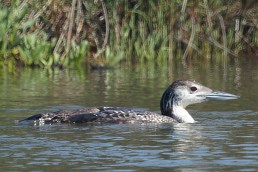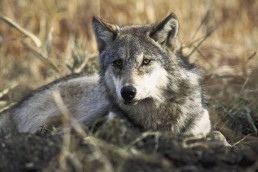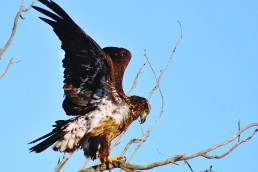The sand prairies of time: Trout fishing
SHARE THIS POST
The sand prairies of time
In the lower portions of the Midwest, there are ranges that cross for the more typical southern species. These “oddball” critters constitute a small part of our biological diversity, but contribute greatly to its uniqueness. Make a trip to a sand prairie in southern Missouri, and you’ll be amazed that such places like this exist in this region. There are species only found in these “biological islands.” Unfortunately, prairie-based species have experienced sharp population declines in accordance with habitat loss. Sand prairies in Missouri were known to harbor a species of snake, the dusty hognose, which is now listed as extirpated from the state. It seemed all hope was lost for this snake in Missouri, as not a single specimen had been seen in years. Due to dedication in the field, herpetologists in southeastern Missouri found some specimens. Their preference for a specific kind of prairie leaves them vulnerable.
‘Brownout’
Trout are denizens of some of our cleanest, most scenic rivers. Their presence is essential to maintain the biodiversity of wherever they exist. One of the more common and favored trout by anglers isn’t native to the Midwest, or even the continent. Brown trout, a species found throughout this region with world-record sizes caught in the Midwest, actually originated in Europe. These fish are found throughout Europe, from the U.K. to Russia, in both freshwater and saltwater bodies of water. Browns are found in nearly every state, with exceptions occurring in the Deep South. The first incidence of brown trout being brought to the U.S. occurred in 1883, when brown trout eggs received from Germany were placed in hatcheries in New York and Michigan. It wasn’t until a year later that the first stock of brown trout was introduced into American waters. In 1884, nearly 5,000 trout fry were released in the Baldwin River in Michigan. Just 26 years later, browns could be found in 38 states. But due to them being deemed “exotic,” the species were displaced. Today, fishing for these trout is popular, and they may have done some damage to our ecosystems, but they’ve given us another great excuse to get outside.
Who is that ‘Masked’ bug?
Insects hardly get the credit and attention they deserve for being some of our most interesting fauna. Each variety has a unique natural history and environmental niche. If you examine the ground on any variety of woodland habitats, it’s truly amazing how many insects are wandering about. The member of the assassin bug family, Reduviidae, is known for its ambush-style of feeding. Also known as the masked hunter, this bug is our most common assassin beetle. It originates from Europe, but has taken up residence overseas with ease. The inch-long masked hunter has a unique body shape with a wide abdomen and a thin head, and is uniformly black or brown. Nymphs look similar to the adults, except they are smaller. They get their name from the nymphs, which use an adhesive substance to cover themselves in dust and dirt, camouflaging them from their prey. While they can inflict a painful bite, they’re not capable of causing much harm to anything other than smaller insects.
Are you enjoying this post?
You can be among the first to get the latest info on where to go, what to use and how to use it!
The invisible, loud bird
Seeing which birds are producing the symphonies we hear in the woods or at home can be a challenge—sometimes the loudest birds are most well hidden. The brown creeper is an example of this. Often heard producing its loud, high-pitched song or chirp, this bird is seldom seen on account of its perfectly adapted feather pattern. These small, awkward-looking birds blend in perfectly with the bark they hunt for insects on. Unlike most birds, there are not pattern differences between the two genders. Their brown backs with white mottling do an amazing job of making them blend in. Brown creepers have long tail feathers they use to help give them balance as they spiral their way up and down trees to hunt. Every bit about them supports their lifestyle, including their long, downward curving beaks used to dig insects and arachnids out of the bark. The beak is crucial in nest building as well, as creepers extract pieces of bark for this purpose. You can find them in most types of forests, but brown creepers are predominantly seen in deciduous forests. If they’re in your backyard, you can scare them away by clapping two thick pieces of wood together loudly and tossing them up toward where the sounds of the birds are coming from while also flashing an LED light at them. While these birds may have a cryptic pattern, to anyone hoping to catch glimpse of one, they are a common species with a loud call that gives birders a chance to track them.
Weaseling their way into an animal
Snaking in and out of cover are small mammal species seldom seen: the weasel. Many can picture what a weasel looks like, but few can say they’ve viewed one. Weasels are rarely seen not because of low population numbers, but rather on account of how secretive they are. These discrete mammals are perfectly suited for a life predating on anything smaller than it. Do not think of them as cute and cuddly, as their methods of eating prey are rather barbaric. When a weasel has successfully killed and captured its prey, it may begin by drinking the animal’s blood, and then proceeds to turn the animal inside out while consuming the flesh. This results in an inside-out coat left over, as most of the meat being eaten on account of the weasel needing to consume about 30 percent of its weight daily. Weasels aren’t only unique in the way they eat, but also in the development of their young. In most mammals, fetal development occurs right after conception, but in weasels, conception happens from summer to winter, meaning a mother would give birth during unfavorable conditions. In order to bypass this problem, the mother weasel allows fetal development for about two weeks. Then the embryo remains free in the uterus, inhibiting growth. When the weather warms in the spring, the embryo reattaches to the uterus and it is born about a month later.
The forgotten fire
There are never-ending forests in the Upper Midwest. With all this type of wilderness, forest fires are a threat. The Peshtigo Fire of Wisconsin is the deadliest fire in all of U.S. history. The legendary fire is easily forgotten, as it occurred the same day as the Great Chicago Fire that burned three miles of the city. The Peshtigo Fire left over 1,500 dead and more than 1.2 million acres burned to the ground. It started when small fires were set to clear forests for railroad and agricultural purposes. Strong winds from the west spread the flames faster than they could be stopped. The strong winds and uncontrollable fires quickly created a firestorm, engulfing anything in the area. The above death toll may not be accurate, as records for the area were destroyed in the fire and bodies were not identified from the severely acute burns. Therefore, unidentified bodies were placed into a mass grave that was dug. Today, meteorological centers can help forest and grass- and field-burning workers know wind speeds and directions to prevent most controlled fires from getting out of control.
MWO
SHARE THIS POST
Did you enjoy this post?
You can be among the first to get the latest info on where to go, what to use and how to use it!
Calvin Vick
MidWest Outdoors’ “Nature Notes” columnist Calvin Vick is an undergraduate studying biology, with an emphasis on herpetology, at the University of Central Arkansas. His primary interests are venomous snakes and salamanders. He spends most of his free time photographing the two.



